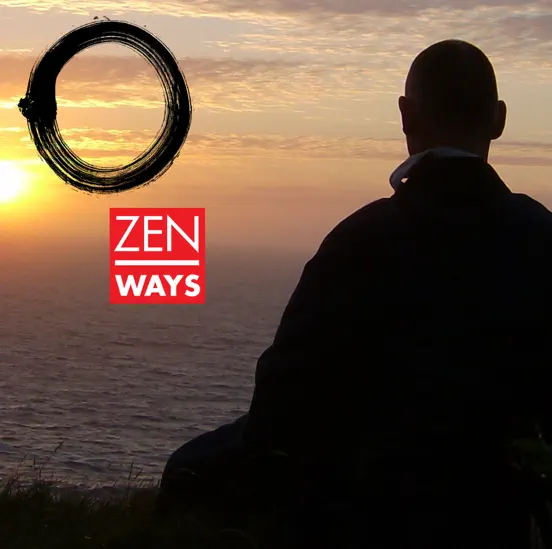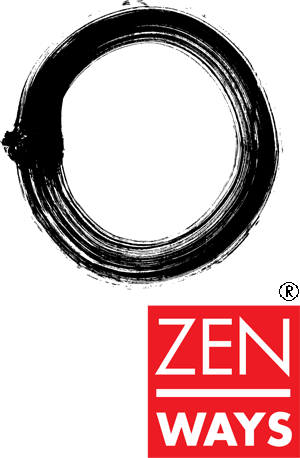Learn meditation for wellbeing
Learn meditation for wellbeing
Zen has a long and distinguished history of teaching meditation as a way of boosting health and wellbeing as well as awakening to our true nature.
Traditionally this is called bompu Zen (literally “usual zen”) This style of meditation is aimed at those looking for things like stress-reduction, better sleep or how to deal with pain, and has no particular philosophical or religious content.
The following is adapted from “Practical Zen for Health, Wealth and Mindfulness” by Julian Daizan Skinner.
Establishing your posture
Most people associate meditation with sitting positions. But it’s perfectly possible to meditate lying down, if your health or energy levels are better suited to that.
If you want to meditate sitting on a chair, try to find an upright chair with a flat or forward tilted base. Ideally your hips should be a little higher than your knees and the feet separated and flat on the floor. If you can’t place your feet fully on the floor, support them with a thick book or cushion; or if your knees are higher than your hips, sit on a cushion to give your trunk some more height.
Positions for sitting on the floor have the same alignment of the upper body. Some practitioners prefer to kneel. You’ll need a support beneath your sitting bones like a cushion or meditation bench, and to create a stable base, make sure to separate the knees.
If you prefer a cross-legged position, use a cushion to lift the sitting bones. Having both knees resting down creates the stable, triangular quality. You may find it most comfortable to start with one leg crossed in front of the other with both feet on the floor. If one or both knees are not fully down to the floor, you can support them with cushions.
Sway your body a little in all directions with the intention of settling into the balanced point where your upper body lifts out of your ischia (sitting bones) with minimal effort.
Allow your body to become still. Relax your shoulders. Keep your neck long and your head balanced weightlessly. Find your chin placement by imagining you have a small soft rubber ball beneath it that you’re holding to your chest – your throat remains open and your chin level.
Soften your eyes and cast them downwards to the floor in front of you. You can lower your eyelids to the half-open position, or you can allow them to softly close. Your lips and teeth are closed with the tongue broad and resting at its most comfortable place on the roof of your mouth.
Allow your whole body to relax.
Beginning to meditate
Become aware of the rising and sinking of the natural breath in the lowest place within the body where you can feel it. Mentally begin counting your in- and out-breaths one to ten. Then start again at one.
Any thoughts, feelings, memories, anything at all can still arise, stay around and pass – but your focus point, the centre of your attention, is the breathing deep down in your body. Anytime you get distracted and lose count, just come back to your breath and start again at one.
As your mind becomes more focused and concentrated, naturally you’ll find your breath becomes more light and gentle. As your breath becomes more light and gentle, your body becomes more and more relaxed and comfortable.
As your mind becomes more focused and concentrated, naturally you’ll find your breath becomes more light and gentle. As your breath becomes more light and gentle, your body becomes more and more relaxed and comfortable.
Later you can count just the out-breaths, or just follow the movement of the breath without the counting.
I would suggest practising counting the breath meditation for 25 minutes. Then for five minutes (and no more) write freely in your meditation diary – splurge out whatever comes to mind. You don’t need any censorship or editing, just write. Have the very soft intention to write about your practice, but if other things come up feel free to write about them too.

Download a free guided meditation in your language
May these recordings help you and those around you to find and realise the truth.
We owe a huge debt of thanks to those members of our sangha who have donated their time to complete the translations and recordings.
The Two Wheels Of Your Cart
The first wheel/wing is aimed at enhancing your wellbeing and vitality – with the understanding that to live an active fulfilling life, and at the same time to penetrate deeply into your true nature, you need a robust, healthy, physical system. The above described bompu Zen fits into this category, and so do the range of practices we teach that cultivate energetic grounding, strength and power.
The second wheel of practice is directed towards gaining insight into the true nature of reality – kensho or satori as it’s called in Zen. This category includes koan meditation and the unborn meditation.
Our video course Wake up and Live introduces you to the full range of practices taught in the Rinzai Zen school that cover both wheels of the cart. [link]
You may also be interested to read Daizan’s book “Practical Zen: Meditation and Beyond”.
Wishing you health, happiness, delight and ever-expanding awareness of the truth of things.
